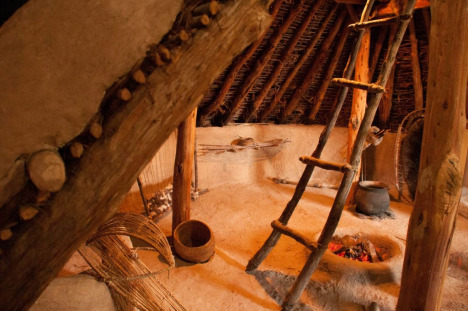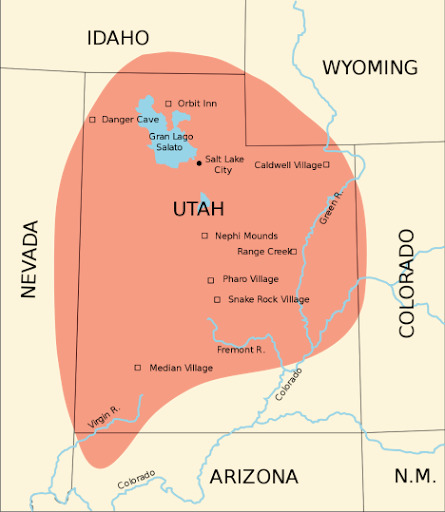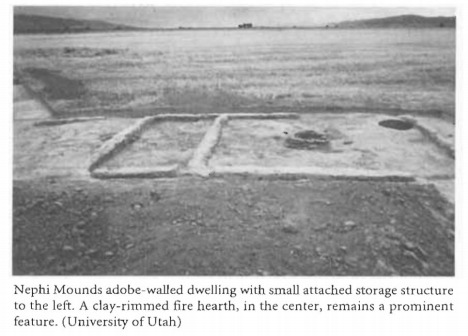
https://www.stgeorgeutah.com/news/archive/2016/09/25/kli-ancients-day-100-hands-of moqui-at-fremont-indian-state-park/#.XpXtpVNKjOQ.
The Nephi Mounds got their name from their location, which is approximately two miles north of Nephi, Utah. The site is an Fremont archaeological site with 30 pithouses and important historical artifacts. This site helps to substantiate the claims that the Fremont were not originally from Utah, but could have descended from Athabascan tribes from the north.
The Nephi Mounds are a Fremont archaeological site situated approximately two miles north of Nephi Utah. In one of these cattle fields just west of the slopes of the mountains, a farmer first discovered the Fremont mounds while working on his farm in 1871. The site was then covered up. It was not until 1965 when, upon further examination by archaeologists from the University of Utah, discovered a series of pit houses and granaries situated in groups that numbered about 30 total structures. Inside were several artifacts that exemplify Fremont culture. There were several pieces of pottery, bone and stone tools, pieces of food, and firepits. These artifacts contribute to the hypothesis that the Fremont were not originally from Utah, but had heavy influence from neighboring tribes that were well adapted to living in the Utah climate. These artifacts are more congruent with finds from Athabascan tribes to the northwest, which suggest that the Fremont had origins from that region. One of the most important aspects of this site are the adobe-coil dwellings that are unique to the Sevier Fremont tribes.
Mystery surrounds the origins and disappearance of the Fremont. Data gathered from the pithouses, moccasins, and ceramics found in Fremont sites differentiate the Fremont from their Anasazi and Pueblo neighbors. This hypothesis is further supported by the skeletal remains of
the Fremont at sites such as the Nephi mounds, which show similarities to Athabaskan groups living in areas as far north as sub-arctic regions.
The story of the Fremont can be told as one of cultural differences and international relations. The semi-nomadic lifestyle of the Fremont leads to high possibility that the Fremont were travelers from outside of Utah. In synthesizing these findings and considering a possible route of travel along the Ivie and Snake river systems, the theory of Athabascan progenitors living throughout the region can be readily endorsed.
As for the Nephi site in particular, the findings here have been supportive of migrant theory thus far. There were 30 mounds total, of which some were living structures, others for storage and worship. There were two skeletons found, a male and a female. The man had evidence of rust on his arm, where he was possibly holding a weapon or tool made from iron. There were many ceramic vessels inside, including a metate for grinding corn. Food scraps and other debris from the period were also in the pithouses. There were deer bones fashioned into needles for the purpose of making moccasins as well.
Images

https://www.stgeorgeutah.com/news/archive/2016/09/25/kli-ancients-day-100-hands-of moqui-at-fremont-indian-state-park/#.XpXtpVNKjOQ.

https://commons.wikimedia.org/w/index.php?curid=1480794
